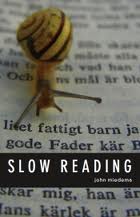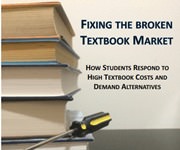 E-book sales are accelerating while print sales are plunging, but there are some important exceptions.
E-book sales are accelerating while print sales are plunging, but there are some important exceptions.
Lower income. E-book sales have not increased among the less affluent: BISG’s Survey of Consumer Attitudes Toward E-Book Reading, May 27 2011. People with a lower income represent just one segment of the digital divide.
Library patrons. Canadians borrowed 1,604,378 library books in one week, only 2% of them e-books: National Campaign for Reading, January 19 2011.
Buyers of hardcovers. The hardcover segment bucked the trend in July 2011: AAP. It is likely that older titles and non-best sellers are more likely to be sold in print than e-book format but I do have numbers on that.
Students. Three-quarters of students prefer a bound book over the digital equivalent: Student Public Interest Research Groups/BISG January 6 2011. Digital books are less than 3% of textbook sales: National Association of College Stores, October 19 2010.
I find the last exception particularly interesting. Students are technically savvy, online all the time, but still prefer print books for study. When you read complex material, when you read to understand or appreciate, when you are deliberately reading slowly, print is still the preferred technology. When it comes to thinking and reflecting the format of the device matters. The two-sided codex is a reflection device. It is a theme I will explore in this I, Reader series.































I understand student’s preference for bound books. ebooks are essentially linear, but very few text books are used in that kind of linear fashion. It’s all “read chapter 4 and then chapter 7 then back to chapter 3, where you’ll only read the first three sections.” — it’s very hard to jump around in an ebook like that.
I don’t accept any of this boloney.
First of all Hard covers are down a fifth on 2010.
Secondly the vast majority of Library users don’t have the option of borrowing eBooks.
Thirdly the vast majority of Students equally do not have a choice. We have read here on teleread many studies pertaining to students and all of them have been biased, badly constructed and of little value.
@Howard
Pretty much everything you see at teleread is pure propaganda in favor of ebooks. That’s okay, it’s why we’re here.
Saying 75% prefer print is the same as saying 25% prefer digital. That is the same ratio we see even in the “ebooks are up 100%” headline reports. In fact, it is higher.
The only difference is the whether the writer is concerned with the trend (ebooks up, print down) or the score (print still ahead).
Although it is interesting that this survey appears to be measuring “interest” as opposed to “market share”. Ereaders so far have been butting up against supply limitations, it may become demand limitations soon.